A simple dry rub and 75 minutes in the oven are all it takes to produce a beautifully marbled, flavorful, and juicy ribeye roast.
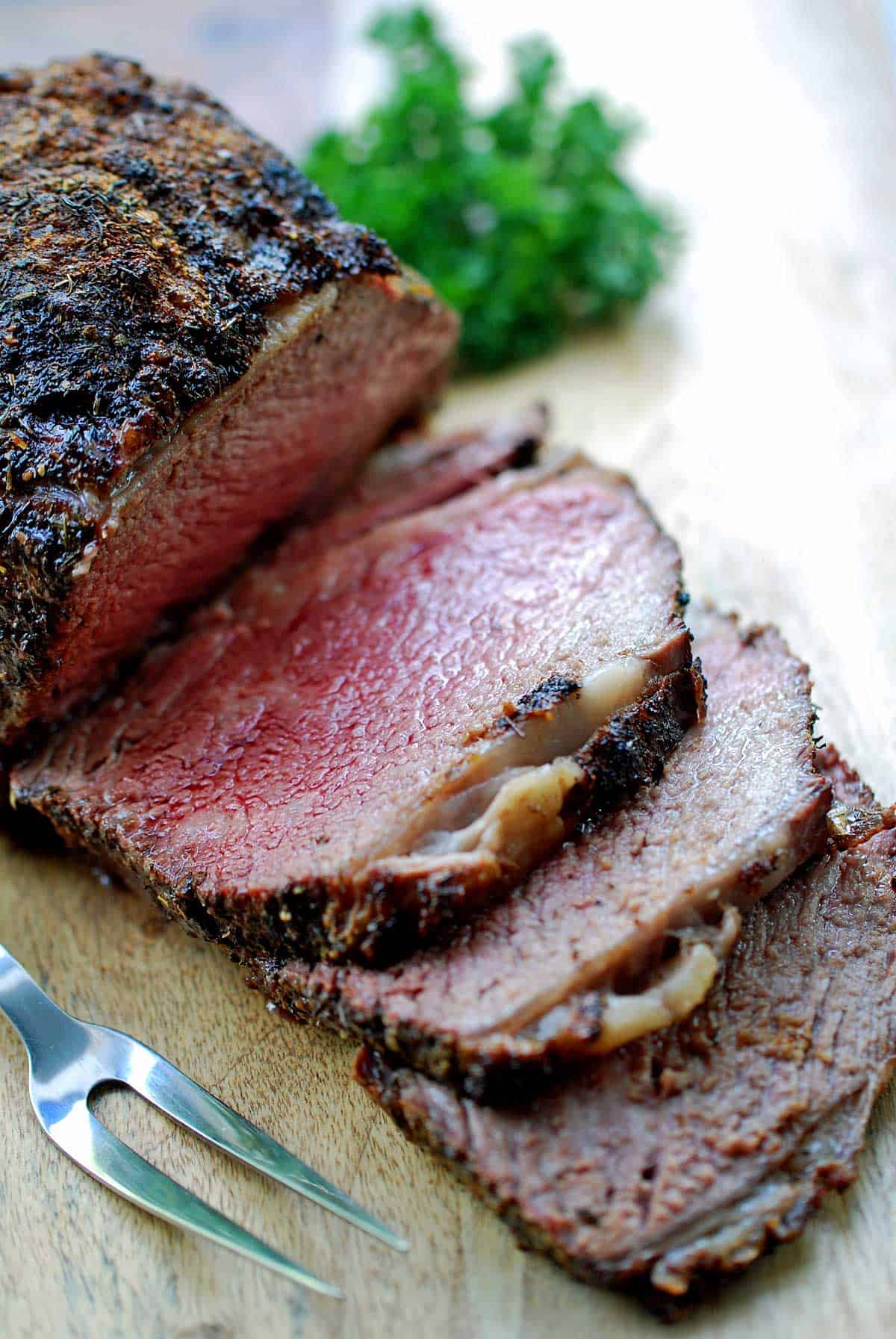
Ribeye is fatty and flavorful, and this simple ribeye roast recipe is a great way to enjoy its robust flavor. It's an easy recipe: Rub the meat with seasonings and cook it in the oven until done. Your main task is to avoid overcooking the roast, and that's easy if you use a meat thermometer. There's no need to marinate the roast before cooking, and you can enjoy the leftovers reheated or cold.
Ingredients
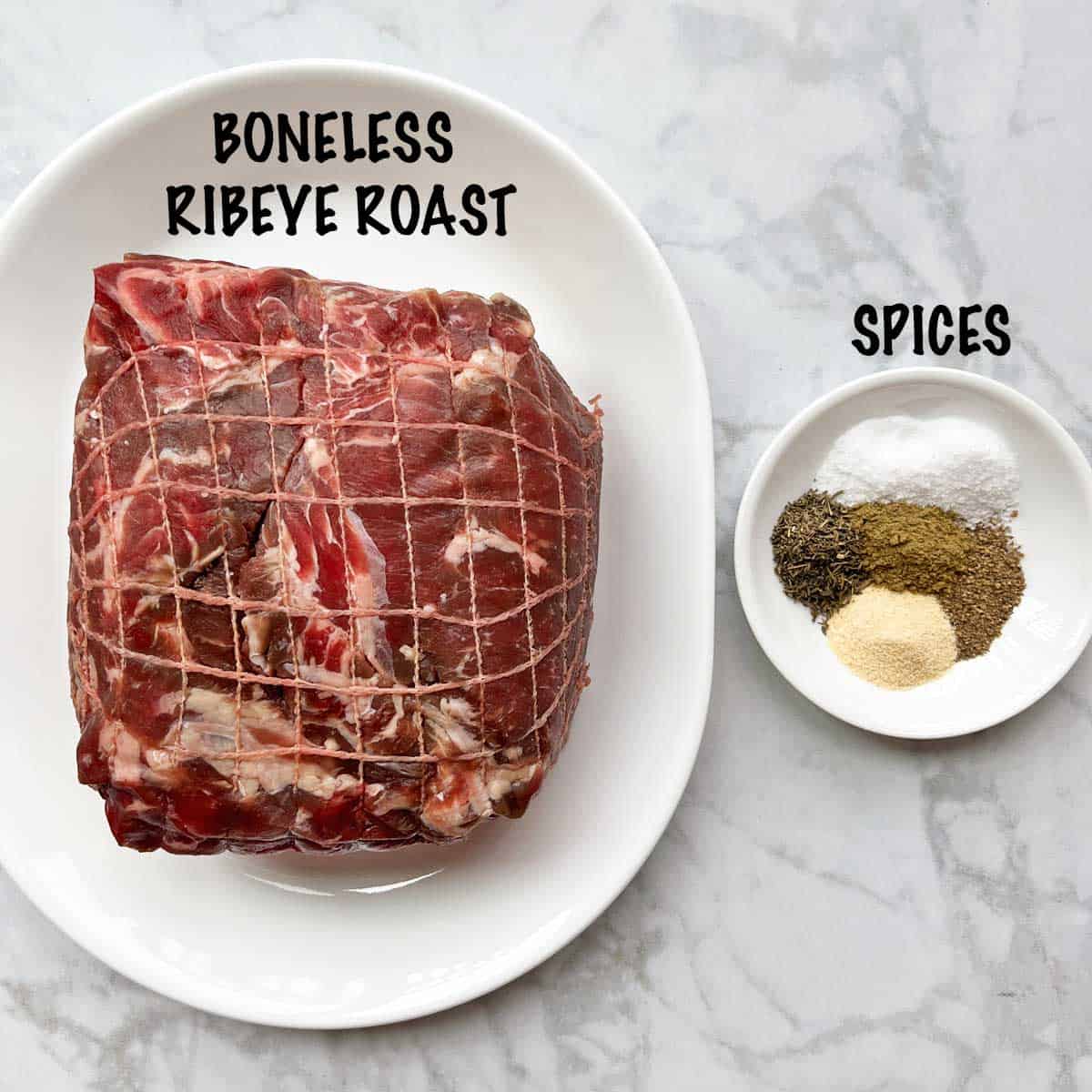
See the recipe card for exact measurements. Here's a look at the ingredients.
- To season: Kosher salt, black pepper, garlic powder, dried sage, and dried thyme.
- Ribeye roast: I usually pick a 3-pound roast. If possible, opt for a USDA Prime grade, the highest beef grade.
Instructions
Just like beef tenderloin roast, the best thing about this recipe is that it's so easy. The detailed instructions and step-by-step photos are included in the recipe card. Here's a quick overview.
Rub the roast with seasonings.
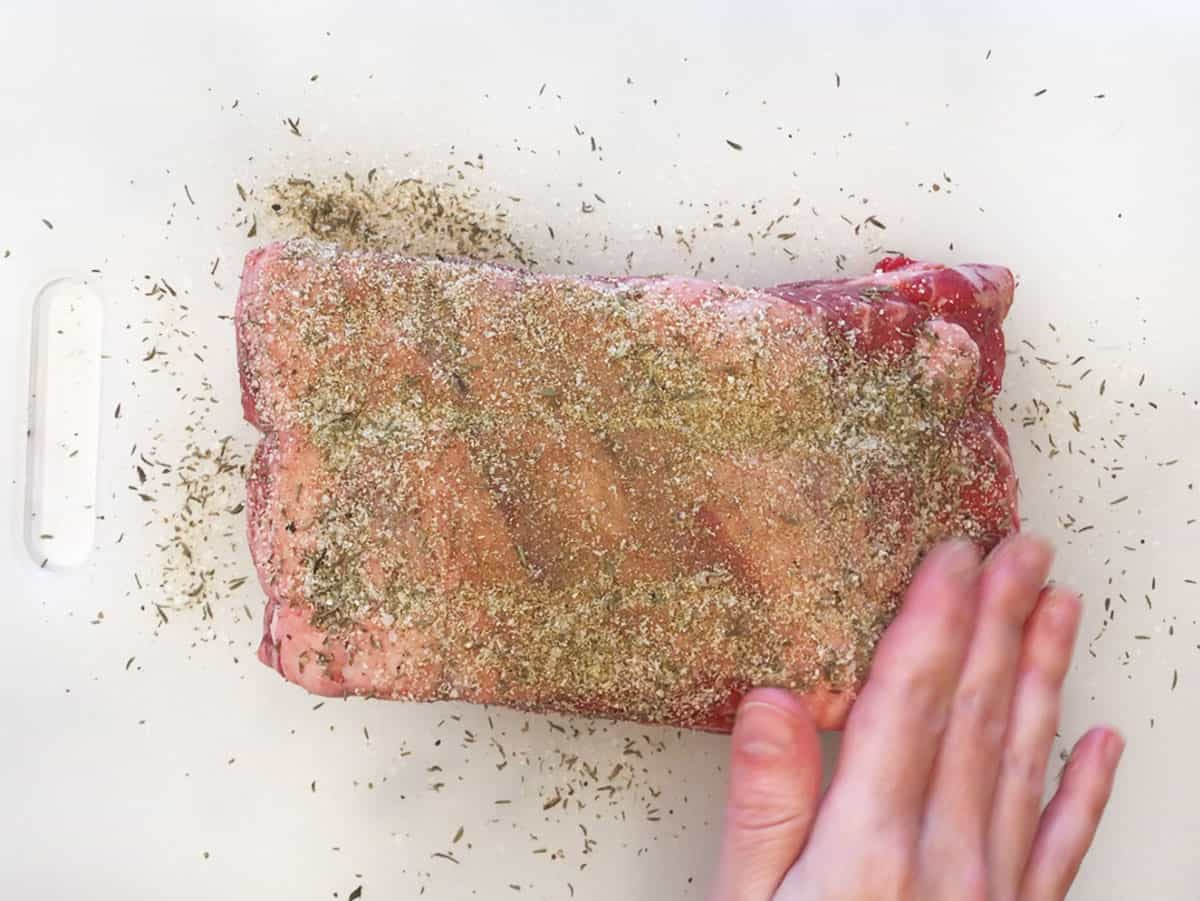
Roast it in a hot oven to crisp the fat cap, then lower the oven temperature and continue roasting until it reaches medium-rare. Remove the roast from the oven, loosely cover it with foil, and allow it to rest for 30 minutes, then slice and serve.
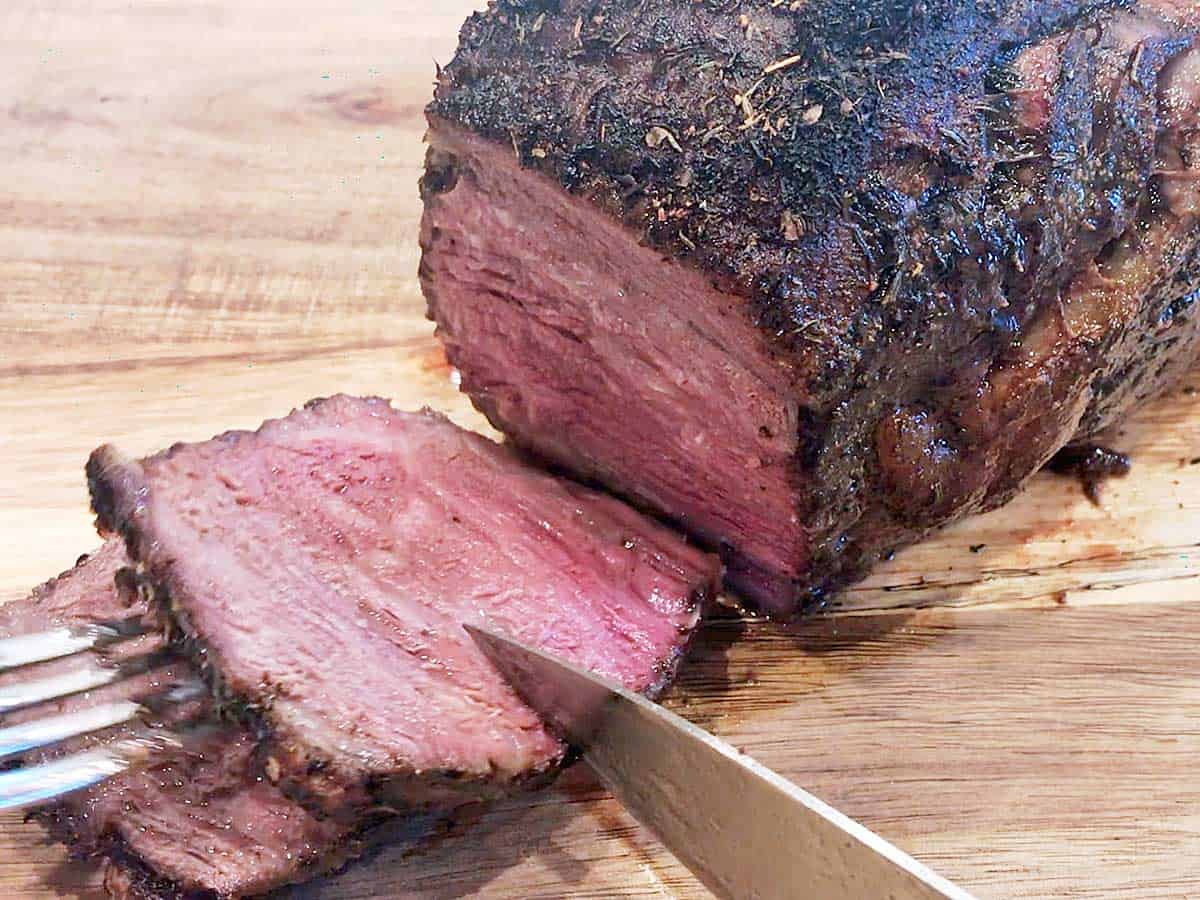
I am a very simple cook and found this recipe over a year ago when I wanted to make a special dinner for one of my sons and his family. We all LOVED it, and I have made it for all of my kids and their families and have shared the recipe with them. We’re making it again tonight.
Pamela A Berry
Read more comments
Recipe Tip: Fat Cap on Top
Place the roast in the pan with the fat cap on top, as shown in the photo below. This way, the fat will melt into the meat as it cooks, adding moisture and flavor. This will also enable the fat to brown and crisp up.
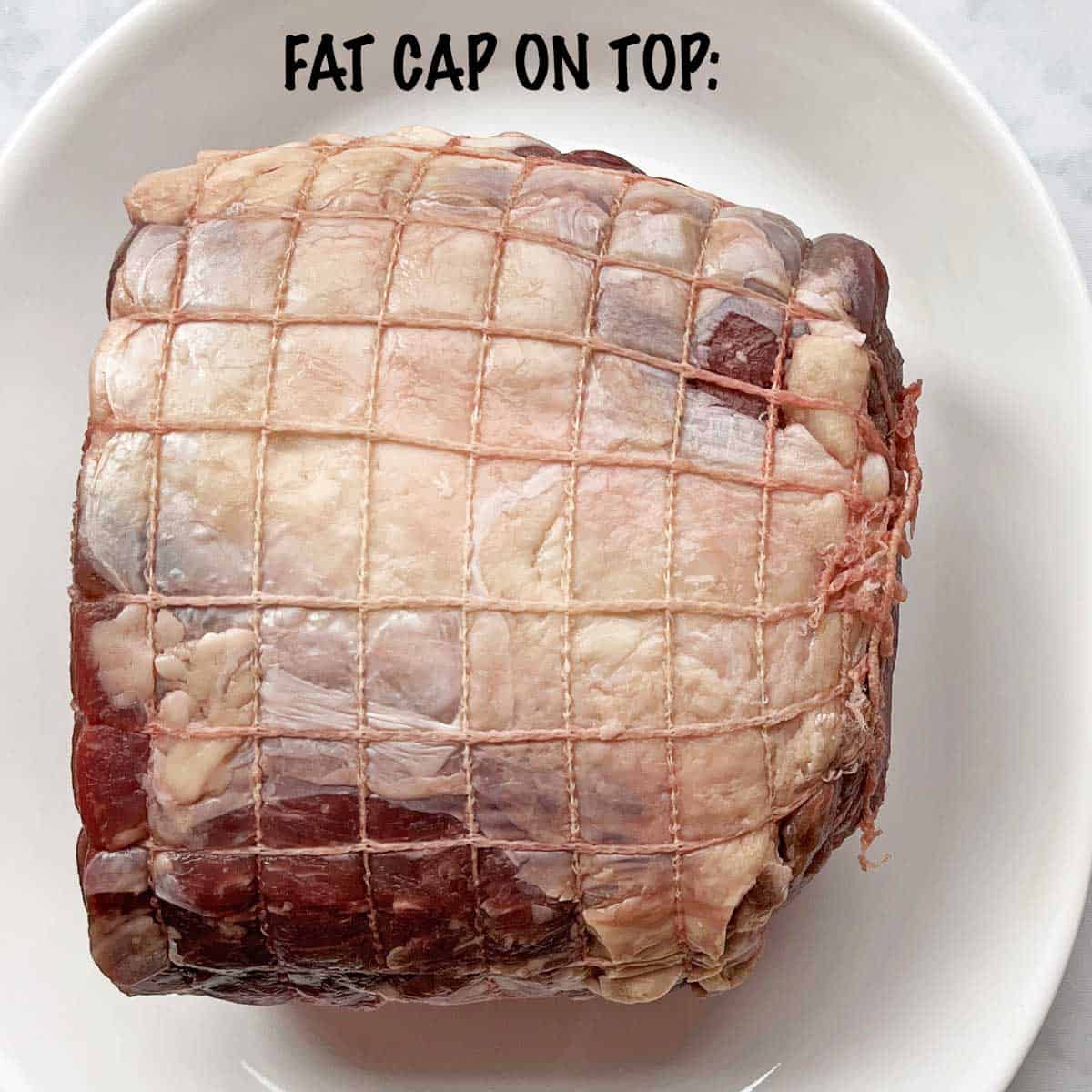
Recipe FAQs
Ribeye is well-marbled, beefy, and juicy. It tastes great without any marinade. Unlike tough cuts of beef such as London broil, ribeye is also tender enough that you don't need a vinegary marinade to tenderize it.
According to conventional wisdom, after the initial 15 minutes of browning the meat, a 3-pound roast should take roughly one more hour (20 minutes per pound). But the only way to know for sure is to use a meat thermometer.
In my oven, for example, after one more hour, the internal temperature usually reaches 120°F, and I need to keep roasting for 8-9 more minutes to reach 135°F. Note that while I prefer medium-rare, ribeye is marbled and juicy enough to taste good even when cooked to medium doneness (145°F), as recommended by the USDA.
It's important to let the meat rest for 30 minutes before slicing it. This will allow the juices to settle and redistribute, preventing the juices from gushing out as soon as you cut into the meat.
You can keep the leftovers in an airtight container in the fridge for 3-4 days. Reheat them covered in the microwave at 50% power. Unfortunately, reheating takes them from medium-rare to medium doneness. Alternatively, slice them thinly and eat them cold! They are surprisingly good this way, served with Dijon mustard or sriracha mayo, quick pickles, pickled red onions, and fresh-cut veggies. It's like eating cold roast beef.
Serving Suggestions
I recommend balancing out the richness of this roast by skipping the starch and serving it with simply prepared veggies such as sautéed broccolini, sautéed spinach, or sugar snap peas.
A simple salad is also good. A few of my favorites include arugula salad, tomato salad, creamy cucumber salad, and asparagus salad. All of them pair well with a rich, beefy roast.
Lastly, if you want a tasty alternative to mashed potatoes, I recommend mashed cauliflower, mashed butternut squash, or mashed pumpkin. Or, go all out and make loaded mashed cauliflower!
Recipe Card
Easy Foolproof Ribeye Roast Recipe
Video
Ingredients
- 2 teaspoons Diamond Crystal kosher salt - or 1 teaspoon of any other salt, including Morton kosher salt
- 1 teaspoon black pepper
- 1 teaspoon garlic powder
- 1 teaspoon dried sage
- 1 teaspoon dried thyme
- 3 pounds boneless ribeye roast - USDA Prime
Instructions
- In a small bowl, use a fork to mix the kosher salt, black pepper, garlic powder, sage, and thyme. Rub the mixture all over the roast, pressing to ensure the rub adheres to the meat.
- Place the meat, fat side up, on a rack in a roasting pan and allow it to get to room temperature, about 1 hour.
- Preheat the oven to 500°F. Insert an oven-safe meat thermometer into the middle of the roast and set the thermometer to alert you when the roast reaches 135°F (medium-rare).
- Place the roast in the 500°F oven and cook it for 15 minutes.
- Reduce the oven temperature to 350°F. Keep roasting until the thermometer registers 135°F. According to conventional wisdom, a 3-pound roast should take roughly 1 more hour (20 minutes per pound). But the only way to know for sure is to use a thermometer. In my oven, after one more hour, the internal temperature usually reaches 120°F, and I need to keep roasting for 8-9 more minutes to reach 135°F.
- Remove the roast from the oven. Loosely cover it with foil and allow it to rest for 30 minutes, then cut it into thin slices and serve.
Notes
- The only way to ensure the meat is done to your liking is to use an oven-safe meat thermometer inserted into the middle of the roast at the start of cooking. This type of thermometer beeps to alert you when the roast is done. Please don't rely on general timing guidelines or an instant-read thermometer. These methods are unreliable.
- If your roast is bigger than 3 pounds, roast it for roughly 20 minutes per pound after lowering the oven to 350°F. If it seems to be getting too dark on top, loosely cover it with foil and keep roasting until your thermometer alerts you that the roast has reached an internal temperature of 135°F.
- It's very important to let the roast rest for 30 minutes before slicing it. This will allow the juices to settle and redistribute, preventing them from gushing out as soon as you cut into the meat.
- The nutrition info assumes USDA prime (fattier), and the fat is eaten.
- The USDA says we should cook whole cuts of beef to 145ºF with a three-minute rest time.
- Keep the leftovers in an airtight container in the fridge for 3-4 days. Reheat them covered in the microwave at 50% power. Unfortunately, reheating takes them from medium-rare to medium doneness, but this can't be helped. Unless you simply slice them thinly and eat them cold! They are surprisingly good this way.
Nutrition per Serving
Save this Recipe!
We will also add you to our weekly newsletter. Unsubscribe anytime. See healthyrecipesblogs.com/privacy/ to learn how we use your email.
Disclaimers
Most recipes are low-carb and gluten-free, but some are not. Recommended and linked products are not guaranteed to be gluten-free. Nutrition info is approximate. Please verify it independently. The carb count excludes non-nutritive sweeteners. Please read these Terms of Use before using any of my recipes.


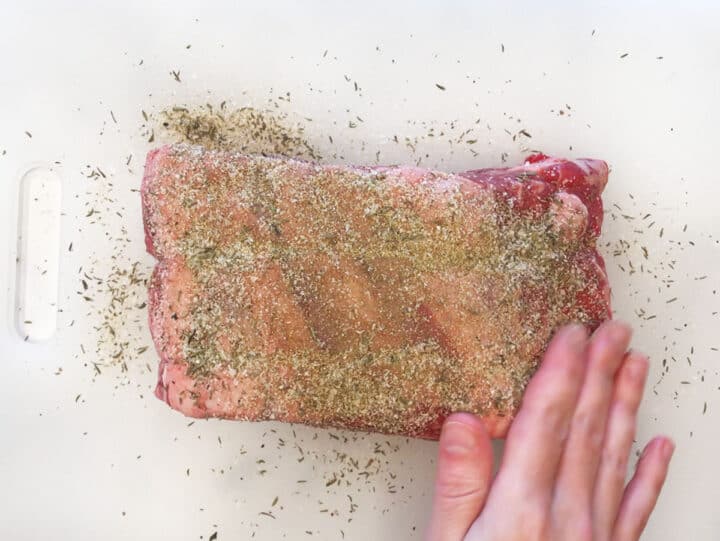
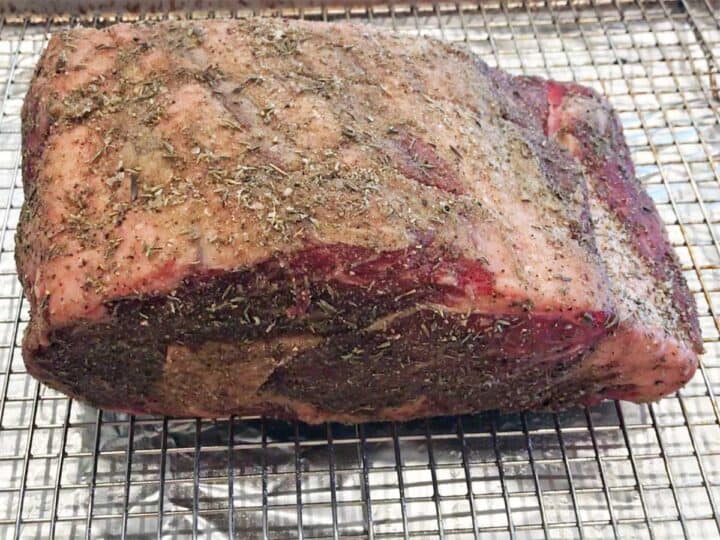
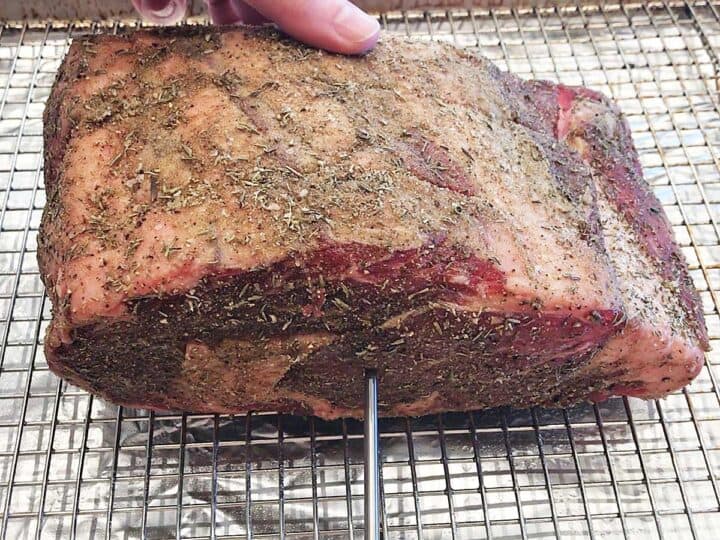

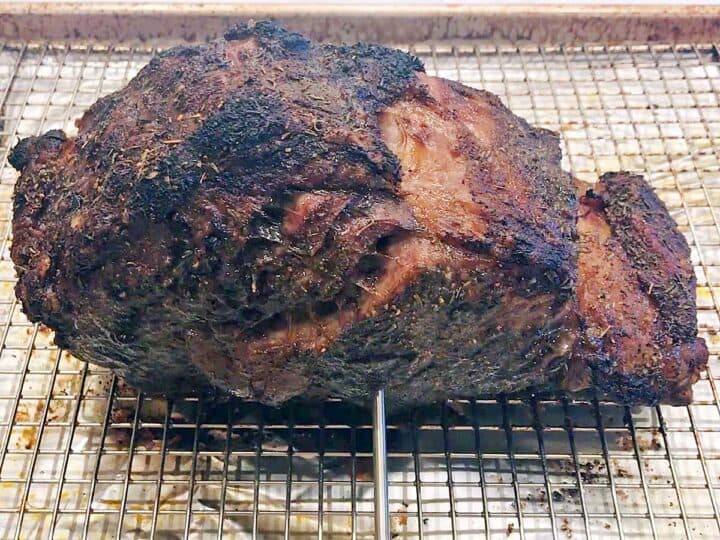
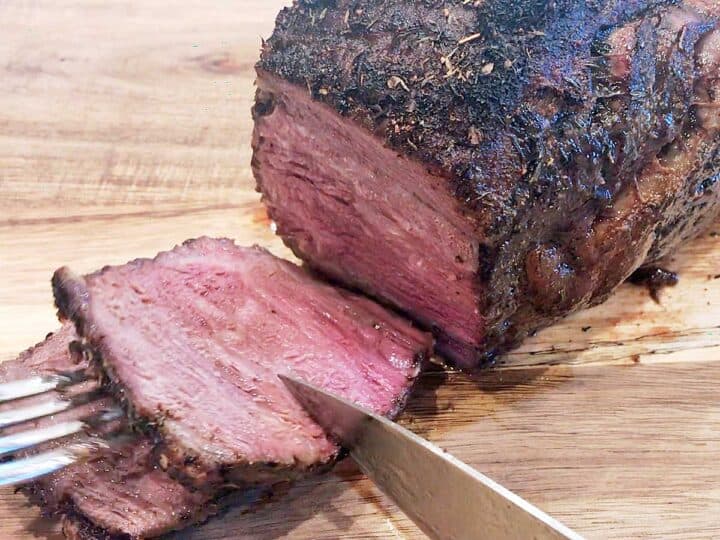
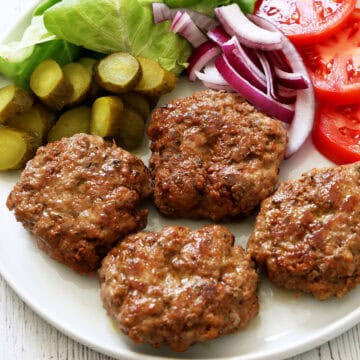
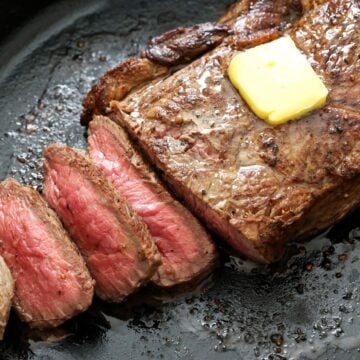

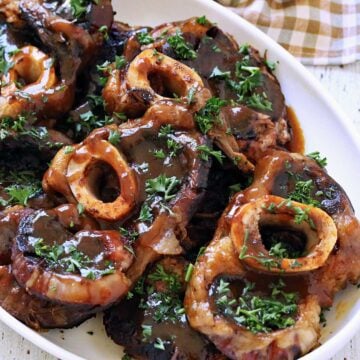
Susan Bauerle says
what are the measurements of the spices.?
Vered DeLeeuw says
Hi Susan,
You can find the measurements in the recipe card.
Celia Mckellips says
Can you use balsamic vinegar also to hold on the ingredients
Vered DeLeeuw says
Hi Celia,
I haven't tried that, so I'm not sure.
Bryson Quinn says
I’m a newly wed man without much experience cooking but I wanted to surprise my wife and cooked for us this recipe and it was a huge success and made her day. I will definitely be doing this again
Vered DeLeeuw says
How wonderful, Bryson! I'm so glad this was a success.
Garnett Jaeger says
Hi, I don't have a rimmed roasting pan. Is there something I could use instead?
Vered DeLeeuw says
Hi Garnett,
You can use a rimmed baking sheet.
Helen Traetow says
Can I add potatoes and carrots with the roast.
Vered DeLeeuw says
Hi Helen,
Yes. Place the roast directly in a roasting pan (no wire rack). Coat baby potatoes and carrots in olive oil, sprinkle them with salt and pepper, and add them to the pan, arranging them around the roast, 40 minutes before the roast should be done.
Sheila Barley says
What temp should I take it out if we prefer it rare? Maybe 110
Also, what kind of meat thermometer.
Thank you
Vered DeLeeuw says
Hi Sheila,
A rare steak should have an internal temperature of 125°F.
This is the thermometer I use:
https://www.amazon.com/ThermoPro-Thermometer-Accurate-Grilling-Backlight/dp/B07MF18JHT/
raizy rubin says
This recipe w/o me realizing is best served immediately but not realizing I warmed it in the oven to keep warm, but it became tough almost inedible. Can this be frozen after slicing and how should it be warmed up.
Vered DeLeeuw says
Oh no! I'm sorry this happened. To answer your question, yes, you can freeze the slices in freezer bags, separating layers with wax paper. Thaw them overnight in the fridge and reheat them in the microwave. Reheat them covered and set the microwave to 50% power. This will minimize, but not eliminate, the risk of them becoming overcooked.
Karilee Jorden says
I have never tried making anything like this but when the roast was on sale I decided to try to learn how to make it. Thank you for this awesome recipe. It was a hit with my family and so easy!!!
Vered DeLeeuw says
Wonderful, Karilee! I'm so glad you enjoyed it.
Kari says
I’m so excited to try this- amazing reviews! The rib eye roast that was a good deal Has a bone in it. Would that make any difference as long as I am using a meat thermometer to monitor it?
Vered DeLeeuw says
Hi Kari,
Great question! You're correct - you can use this recipe for a bone-in roast as long as you use a meat thermometer. Make sure your thermometer isn't touching the bone.
Pamels says
Going to try this.
Vered DeLeeuw says
I hope it turns out well!